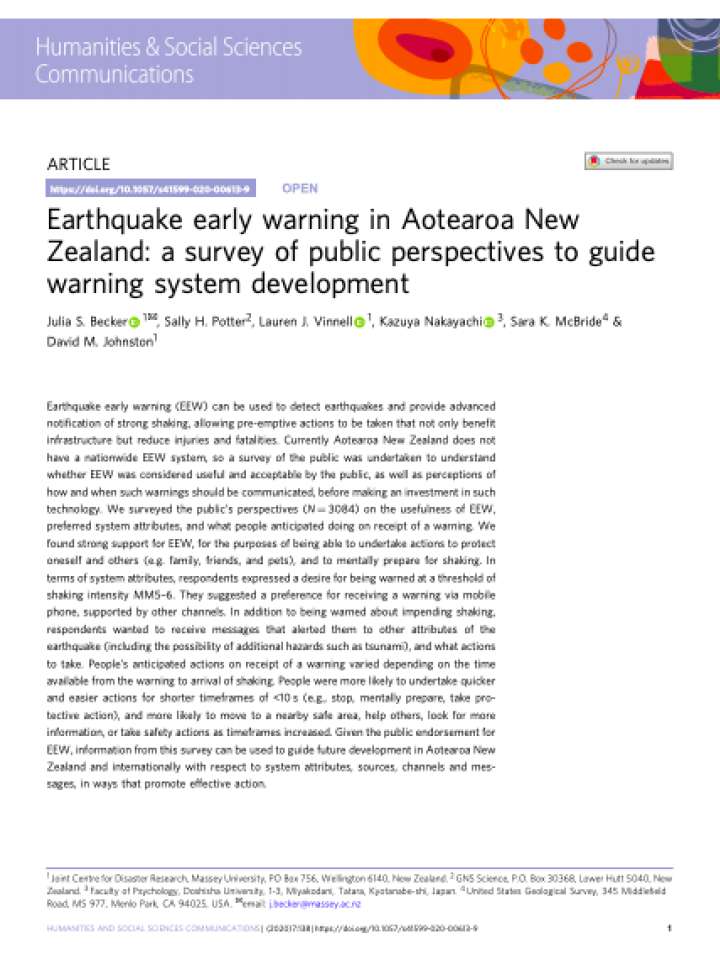Earthquake early warning in Aotearoa New Zealand: a survey of public perspectives to guide warning system development
Currently Aotearoa, New Zealand, does not have a nationwide EEW system, so a survey of the public was undertaken in this paper to understand whether EEW was considered useful and acceptable by the public, as well as perceptions of how and when such warnings should be communicated, before making an investment in such technology.
Earthquake early warning (EEW) can be used to detect earthquakes and provide advanced notification of strong shaking, allowing pre-emptive actions to be taken that not only benefit infrastructure but reduce injuries and fatalities.
The authors surveyed the public’s perspectives (N = 3084) on the usefulness of EEW, preferred system attributes, and what people anticipated doing on receipt of a warning.
The results show:
- strong support for EEW, for the purposes of being able to undertake actions to protect oneself and others (e.g. family, friends, and pets), and to mentally prepare for shaking. In terms of system attributes, respondents expressed a desire for being warned at a threshold of shaking intensity MM5–6.
- a preference for receiving a warning via mobile phone, supported by other channels among the respondents. In addition to being warned about impending shaking, respondents wanted to receive messages that alerted them to other attributes of the earthquake (including the possibility of additional hazards such as tsunami), and what actions to take.
- that people’s anticipated actions on receipt of a warning varied depending on the time available from the warning to arrival of shaking. People were more likely to undertake quicker and easier actions for shorter timeframes of <10 s (e.g., stop, mentally prepare, take protective action), and more likely to move to a nearby safe area, help others, look for more information, or take safety actions as timeframes increased.
Given the public endorsement for EEW, information from this survey can be used to guide future development in Aotearoa New Zealand and internationally with respect to system attributes, sources, channels and messages, in ways that promote effective action.
Explore further
